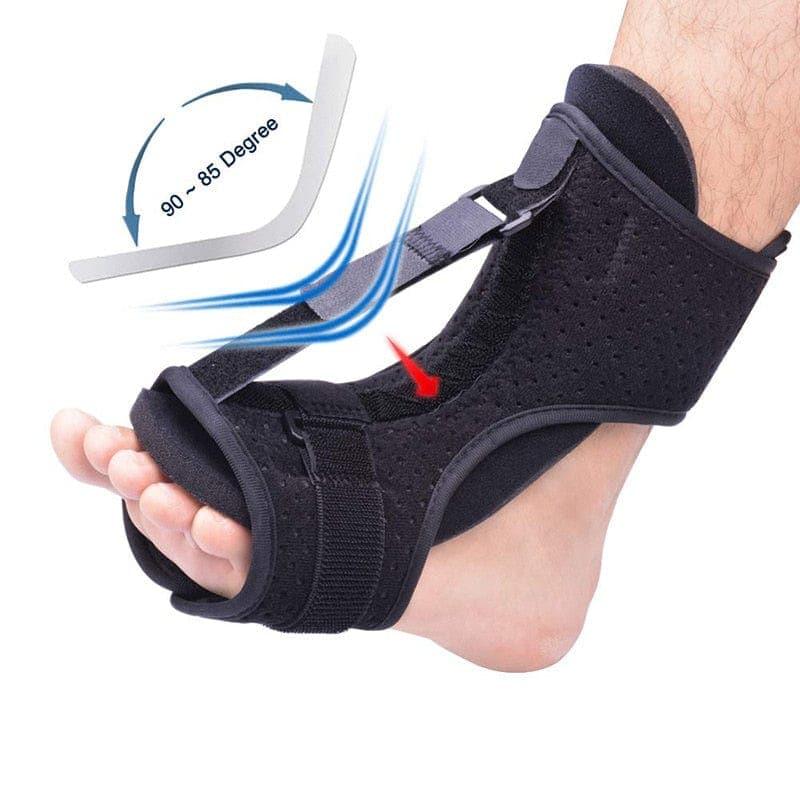If you’ve been dealing with heel pain that refuses to go away, you’re not alone. Plantar fasciitis can be frustrating—it lingers, flares up when you least expect it, and interferes with even the simplest things, like a morning walk or standing in the kitchen. But here’s the good news: you can manage it, and one of the best tools in your recovery kit might just be a plantar fasciitis brace.
Let’s break down what works, what doesn’t, and how to actually feel better.
What support is best for plantar fasciitis?
Not all support is created equal. If you want lasting relief, go for options that reduce stress on your fascia and keep your foot in a neutral position:
-
Plantar fasciitis braces (especially night splints) help gently stretch the fascia overnight.
-
Orthotic shoe inserts offer daytime support, especially if you stand or walk for long hours.
-
Compression socks can also reduce swelling and provide light arch support.
But don’t expect instant miracles—consistent use is key.
What is the best type of splint or brace?
Night splints might look bulky, but they’re super effective. The best type is one that:
-
Keeps your ankle at a 90-degree angle
-
Gently stretches your arch and Achilles tendon
-
Is breathable and adjustable for comfort
Some braces are soft and sock-like, while others use rigid plastic shells. Try a few styles to see what works best for your routine.
How long should you wear a plantar fasciitis brace?
This depends on how severe your condition is. Generally:
-
Start with every night for at least 4–6 weeks
-
Continue wearing it until your morning pain noticeably decreases
-
Some people use it for 3 months or longer, especially if symptoms return
The brace isn’t forever, but it is a valuable part of short-term healing.
How to heal plantar fasciitis quickly?
While “quickly” can mean different things for different people, here’s a solid plan that helps most:
-
Use a plantar fasciitis brace consistently at night
-
Wear supportive shoes during the day—no bare feet!
-
Stretch your calves and arches 2–3 times a day
-
Massage or roll your feet using a frozen water bottle or tennis ball
-
Limit high-impact activities like running or jumping
Stick to this routine, and most people see improvement within weeks.
Does plantar fasciitis go away on its own?
It can, but it usually takes longer and is more painful if untreated. Some cases resolve in 6–12 months without formal treatment—but that’s a long time to walk around in pain.
Using a brace, managing inflammation, and making smart shoe choices can help speed up the healing process significantly.
What not to do with plantar fasciitis
Sometimes people delay healing by making simple mistakes. Here's what to avoid:
-
Wearing flat shoes or flip-flops (no arch support!)
-
Walking barefoot, even at home
-
Skipping stretches or brace use
-
High-impact workouts that aggravate your heels
Rest doesn’t mean complete inactivity—but avoid things that worsen your symptoms.
How do I know if it’s working?
When your morning pain starts to fade or you’re able to walk longer without discomfort, your treatment plan—including the brace—is likely doing its job.
You might also notice that after a few weeks of wearing the brace, your foot doesn’t feel as tight or sore after rest. That’s a big win.
Can you speed up recovery with toe spreaders?
Toe spreaders aren’t a standalone cure, but they can help when used with your brace. By separating your toes, they reduce tension in the fascia and improve alignment—especially helpful if you have overlapping toes or wear tight shoes a lot.
Think of them as a sidekick to your brace—they help support your foot’s natural structure.
Final Words: Healing Takes Patience (and a Good Brace)
Living with plantar fasciitis isn’t easy, but you’re not stuck. A solid treatment plan—including a well-fitted brace, good shoes, and stretching—can truly turn things around. If you’ve been suffering for a while, now’s the time to be proactive. Don’t wait for the pain to get worse.
Small, consistent steps (pun intended) can bring big relief.
So, give your feet the care they deserve. A few weeks from now, your future self will thank you.

